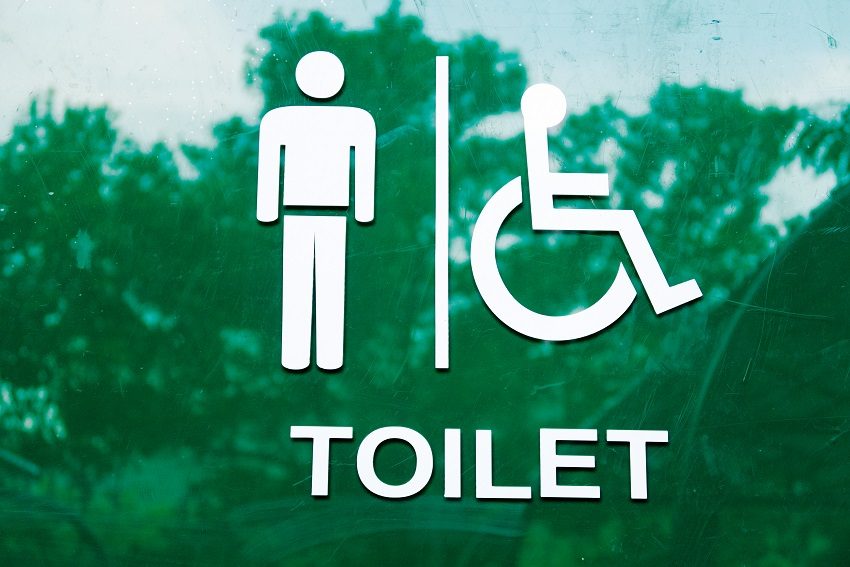Slings and Arrows: Should city ratepayers stump up for Bowden-adjacent public facilities?

As more high density developments pop up on the city’s fringes, a petition from Bowden residents for improved Park Lands toilet facilities presents a test case: when ratepayers of neighbouring councils demand amenities on City of Adelaide land, who should pay?
Toilet request not child’s play
A 386-signature March 2019 petition calling on the city council to construct toilets at a park lands recreation site opposite Bowden Village has highlighted complicated political issues behind who should pay for what on inner city community land. The village is a high-density apartment site north-west of the city where the former Clipsal factory once stood.
The petitioners demanded fast action. But there was no mention of the fact that most of them were ratepayers or tenants of ratepayers of Charles Sturt council, not the city council. They wanted city ratepayers to fund something that was in reality a City of Charles Sturt facility, almost exclusively used by Charles Sturt ratepayers.
When the state government pushed through a 2012 development plan amendment to authorise village construction, a short time later it spent several millions creating the park lands recreation site including sports courts, BBQ facilities and a skate park. It signalled acceptance that, having created a new residential concept so dense that there was no play space, it ought to accept the recreational consequences and provide for it across the road on park lands. But omitting to build toilets at a site created to meet the future needs of a community of young families reflected typically short-sighted government infrastructure planning.
The city council diplomatically said nothing about this when receiving the petition. Weeks later it budgeted $350,000 to pay up, even though fair play ought to mean that the City of Charles Sturt that collects the rates paid by the majority signing the petition should pay. It may be park lands under the ‘care and control’ of the city council, but that particular site, only 100 metres from the ever-expanding high-rise apartments, is very clearly a place for people who have purchased (or rent) units there. Until the towers began to appear, that park lands site was not in demand by anyone. There were no facilities, and no demand for any.
Petition suggests broader issues
The Bowden petition is one small symptom of problems arising from government short-term planning policy outcomes. It also highlights local government turf skirmishes. In Charles Sturt’s case, it’s a western suburban council hoping that a residential development, which has since 2012 resulted in a rich flow of new rates revenue to Charles Sturt, can drive the open-space facilities cost consequences onto the hands of another council – the City of Adelaide. It’s also a harbinger of more problems to come. In 2012, Labor’s planning minister, John Rau, significantly amended zoning rules allowing high-density residential development along main roads adjacent to Adelaide’s park lands’ boundaries – north, south, east and west. Bowden Village (on Park Terrace) was the first. Another soon to emerge will be on Port Road, Thebarton. But, unlike Bowden, that one isn’t a government-backed project, so it’s unlikely there will be any state-funded park lands response there (with or without toilets).
In future there’ll be many more commercial apartment projects mushrooming adjacent to the boundary, particularly east (Kent Town/ Burnside) or south (Unley/Parkside) of the park lands. Demand for new park recreational facilities to serve these new communities will put fresh financial pressure on the city council. It already annually spends about $18m of its tiny rates base on park lands maintenance and operations. No other council spends a cent. When those 386 folks signed the Bowden petition, few would have been aware of the background politics. One can’t help thinking that somewhere in Charles Sturt’s western corridors someone is laughing all the way to the next budget session. Unley, Burnside and Payneham/St Peters council bean counters will be closely monitoring who pays for the Bowden demand.
The trees have it
Not a week goes by without some green-tinged advocate on a public payroll somewhere bleating about climate change, how the world is getting hotter and what should be done to reverse it. One common solution proposed is to simply plant more trees. It’s a popular suggestion because no-one disagrees with the theory. ‘Canopy coverage’ is a way of measuring how trees in our city’s heart are contributing to the goal, but a March 2019 report card shows poor results. For example, the city council’s assessment of canopy of its western city edges is 19.79 per cent (north end) and only 9.21 per cent (south end). On the north-east-end side of the city (Flinders/ Pirie/Grenfell/Rundle Streets) it’s a bit better, but still only 15.86 per cent. Those numbers indicate an F for Fail in the C for Canopy test. Simple answer – get planting. Not so fast! Turns out that a substantial number of those who could deliver the CBD goods have investments (real or metaphorical) in avoiding any commitment to expanding a shady canopy likely to make a difference.
They include the city corporation itself, with its civic duty to maintain wide footpaths, multiple street-sited car park spaces, underground services, awnings and power lines. There are also local folk themselves who insist on having their own sealed driveways, and keeping as many street car parking spaces as possible. This is where the green advocates’ pleadings collide with the realpolitik of Adelaide inner-city community life. As a council policy wonk dryly noted in a recent analysis: “As 75 per cent of land in the CBD is privately owned, the community’s contribution to greening is critical.” That’s another way of saying ‘On the numbers, they’re not being helpful in resolving the city’s few-trees problem.’
*Ash Whitefly is Executive Director of the Adelaide Whitefly Institute of Diplomatic Studies
Header image:
Shutterstock